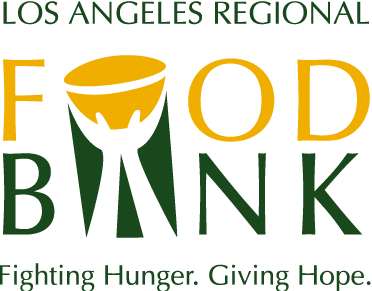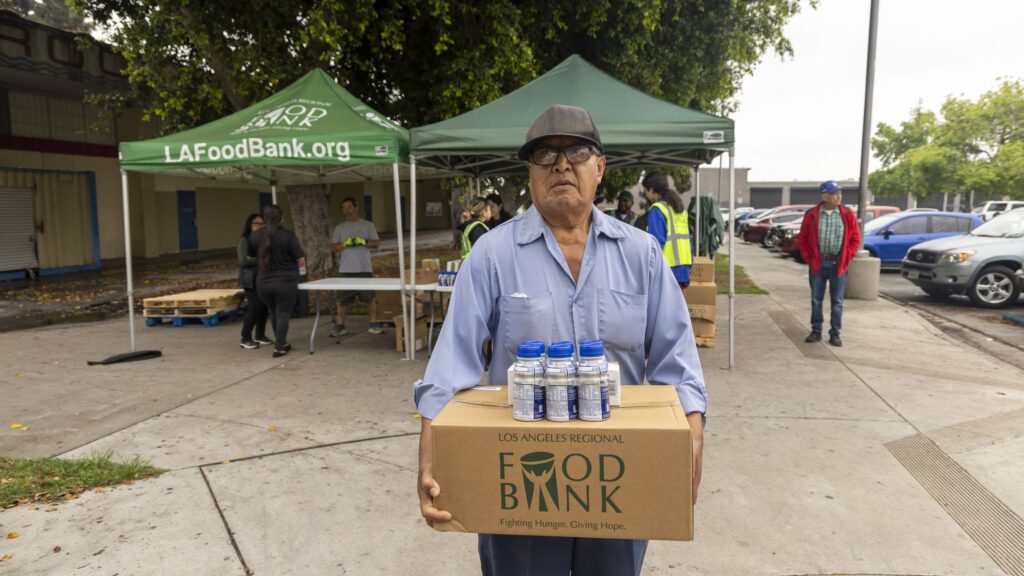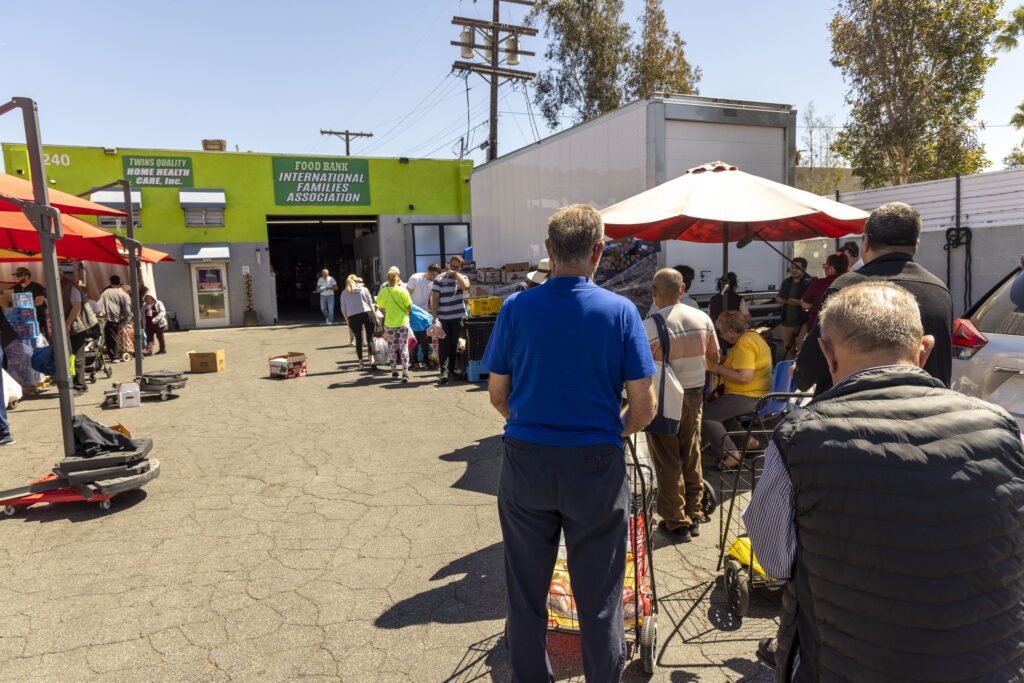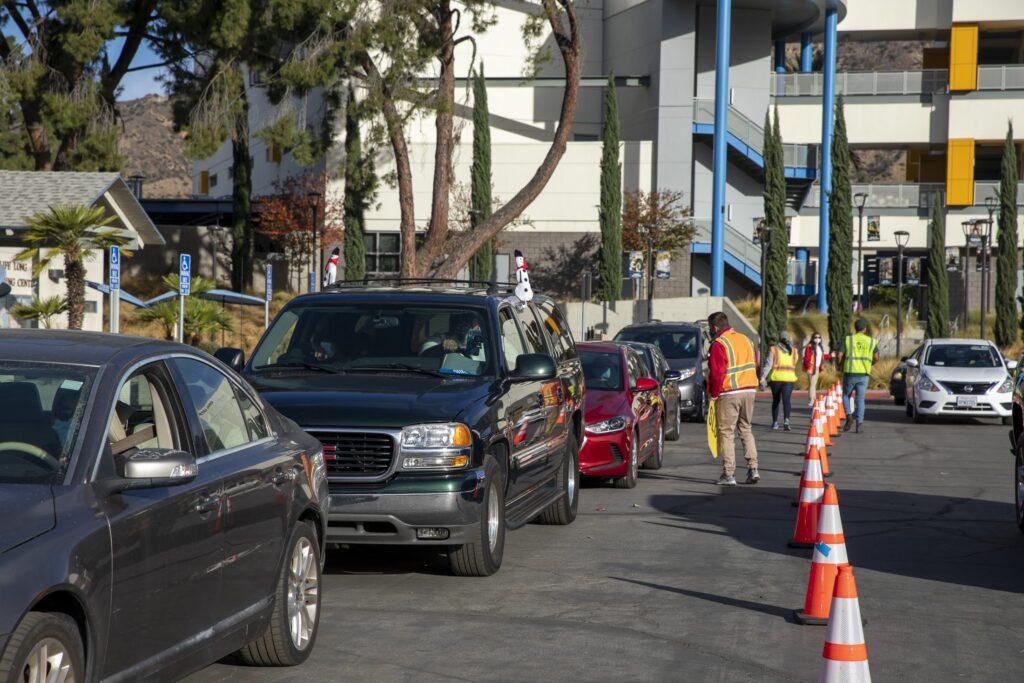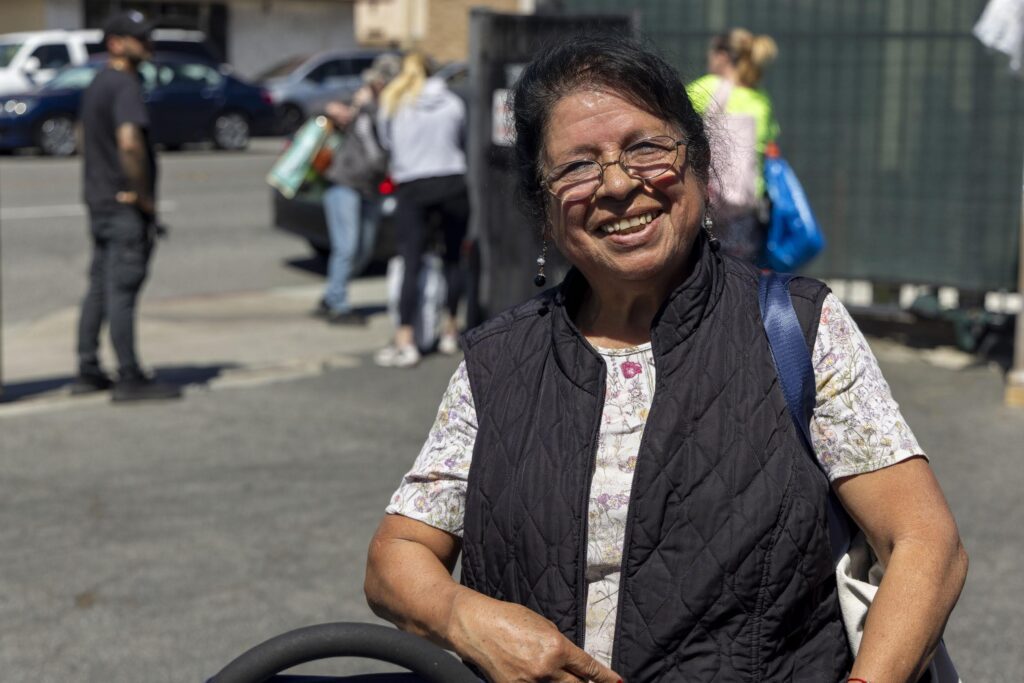Economic Impact on LA County
Economic Impact on LA County
Los Angeles County holds many distinctions: from being the entertainment capital of the world where the film and entertainment industry live, being home to champions like the Lakers and the Dodgers, boasting a world-renowned cultural, fashion, culinary and entertainment playing field full of world-class museums, amusement parks, high profile art and music venues and having paradisal weather all year round with an estimated 3,200 hours of sunshine a year, so it comes to no surprise that it is a destination spot with a reported 50 million visitors in 2019 alone.
At the beginning of 2020, the Los Angeles County economy had experienced a prolonged and unprecedented growth period where economic fundamentals were strong and the chance of a recession was low, according to a recent report released by the Los Angeles County Economic Development Corporation (LAEDC).
All of that vibrancy in Los Angeles County came to a screeching halt as a single-shock event upended our lives and changed how we were (and are) living thanks to COVID-19: the global pandemic all of us are still feeling the impacts of a whole year after it surfaced.
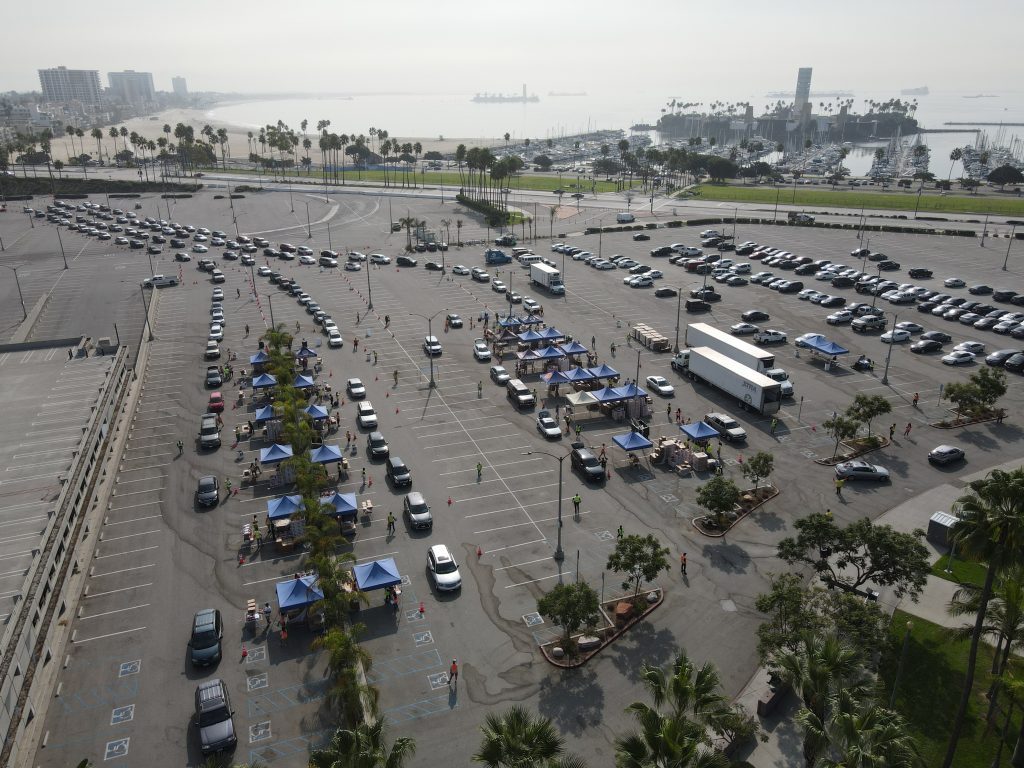
A Shock Felt Across the Globe
Almost overnight, economic activity across many industries was interrupted as global supply chains faced factory closures and stay-home mandates. Travel restrictions impacted domestic and international tourism, business travel and related consumer spending and public gathering, entertainment and recreation were all put on hold to limit infection. Experts say that the burdens of having to pivot to a new reality have had its inequities – widening the disparities within the community before the pandemic arrived.
“In my 30 years in this line of work, I have never seen anything like this,” said Michael Flood, President and CEO of the Los Angeles Regional Food Bank. “So many people are seeking food assistance from the Food Bank and our network of 700+ Partner Agencies, and many food recipients never imagined being in a situation like this. Many individuals and families are not seeing the light at the end of the tunnel and there is great anxiety about their ability to consistently access basic needs like nutritious food.”
Our Partner Agency Network and the Food Bank saw many more new people seeking food assistance during this time when the pandemic transformed our lives, causing more uncertainties. Those in our community who are already vulnerable to food insecurity were feeling the brunt of the economic fallout due to the pandemic.
“Low-income workers are experiencing job loss at disproportionately high rates, small businesses are closing at higher levels due to drastically decreased revenues and low levels of liquidity, and non-essential service industries that rely on person-to-person interaction are faring worse than essential industries and knowledge-based industries which were able to transition to remote work,” states the LAEDC report.
The Perfect Economic Storm Brewing
While Southern California boasts year-round warm, ideal weather conditions – it comes with a hefty price tag. According to Biz Journals, six Southern California cities ranked in the top 20 most expensive cities to live with Los Angeles in the Top Ten.
It doesn’t help that there was wage stagnation at the lower end of the income spectrum and Los Angeles County with the state’s highest poverty rate at 24.3% before the pandemic, according to Reuters.
With affordable housing already a growing problem in the area, many residents faced even more challenges throughout the pandemic. While many experts have reported a “K-shaped” economic recovery – where higher-income households have generally been doing financially well while lower- and moderate-income households are just barely getting by, reports a recent Washington Post article.
“As of late February, about a quarter of adults in low-income tenant households were behind on their rent,” according to the Census Bureau’s Household Pulse Survey. Landlords stuck with tenants who can’t pay may try to offset these losses by raising rents on everyone else. Rents in lower-end units tend to already be close to operating costs, [Jenny] Schuetz, a senior fellow at the Brookings Institution, noted, so landlords may have slim profit margins.”
“They don’t have money to move elsewhere, and landlords know they have them over a barrel,” said Sandy Rollins, executive director of the Texas Tenants’ Union. “They can say, ‘Here this is the price, this is what you have to pay, you can go to the food bank if you need to save money.’
Lights, Camera, Halted-Action
A region synonymous with glitz and glam, the city’s creative hubs are the lifeblood of Los Angeles pumping invaluable vibrancy and stimulus into the economy locally and globally. Enter: a global pandemic and all of that vitality noticeably interrupt the livelihoods and people behind the same industries that typically keep the area going.
“The hardest-hit industries in the County include hospitality and tourism; the motion picture and television industry; non-essential retail, such as furniture and clothing stores; personal care services; and arts, entertainment and recreation that includes performing arts, spectator sports, museums, and amusement parks,” reports the LAEDC report. “Mandated closures and business restrictions, unprecedented job loss and changes in consumption reversed economic growth in 2020; real gross County product (GCP) fell 3 percent year-over-year.”
We met one of the many people impacted by the economic downturn related to the pandemic at a drive-through distribution. To learn more about how Lola, a singer, songwriter, musician and live event host went from volunteering at the Los Angeles Regional Food Bank to facing food insecurity for the first time watch the full video here
The pandemic’s effects on employment in the County were most noticeable in March and April. The County lost an estimated 716,000 nonfarm jobs and by May, the County’s seasonally adjusted unemployment rate jumped from 4.3% in February to 21.1% in May.
By May, the Food Bank and our network Agency Partners of 700+ in the County experienced a 70% increase in demand for food assistance compared to the pre-pandemic period. At this point, the Food Bank and our Partners distributed 23.7 million pounds of food – the equivalent of 19.7 million meals since March, including 356,750 emergency food boxes. The County of Los Angeles recognized the unprecedented demand for food and committed $10 million to the Food Bank to purchase food to supplement the donated food inventory.
Unprecedented Demand Met With Unprecedented Support
In 2020, the Food Bank distributed 174.6 million pounds of food and product to our 700 Partner Agencies and directly through Food Bank programs. An estimated $270 million worth of food and product was distributed – the equivalent of 143 million meals.
The Food Bank added 100 new Agency Partners since the Coronavirus crisis started. The Food Bank provides food to families and individuals through our Mobile Food Pantry (MFP) program, which distributes food off of our trucks at various locations. Amid the pandemic, many of the MFP distributions have transitioned to a “Drive-Through” format (some still serve walk-ups where feasible) to reduce personal interaction per Public Health guidelines. Recent distributions to workers laid off or experiencing a decrease in work hours have ranged from 1,000 to 7,560 families served per distribution. With the closure of some Partner Agency sites and the increased demand for food assistance, the Food Bank is scheduling additional drive-through distributions throughout LA County. More than 270 drive-through food distributions have been held to date, serving communities spanning the Antelope Valley to Pomona to the South Bay.
With Governor Newsom’s request for seniors age 65 and older to stay at home, the Food Bank started partnering with Amazon early in the pandemic to deliver food to seniors. The Food Bank provides food packages to 27,800 seniors every month at 149 senior centers and other sites throughout Los Angeles County.
The Food Bank is also supplementing the distributions of Los Angeles County senior meals with shelf-stable food items. With school closures, the Food Bank is supplementing the school district’s “Grab and Go” meal distributions for schoolchildren with additional food for the families at the Los Angeles and Inglewood Unified School Districts and the Mountain View School District in El Monte. A typical month before the Coronavirus Pandemic, the Food Bank provided food to 300,000 adults, seniors and children through our Partner Agency network and Food Bank direct distribution programs. The number of people served has increased markedly and is now estimated to be at least 900,000 people served over a month.

